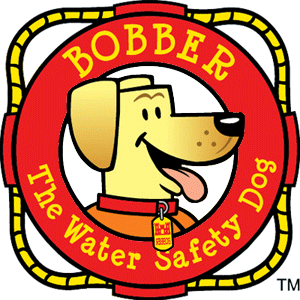 Each year about 200 children drown in the U.S. and several thousand others are treated in hospitals for submersion accidents—accidents which leave children with permanent brain damage and respiratory health problems.
Each year about 200 children drown in the U.S. and several thousand others are treated in hospitals for submersion accidents—accidents which leave children with permanent brain damage and respiratory health problems.
Children have a natural curiosity and attraction to water but remember, it only takes a few seconds for a small child to wander away and as little as 8 seconds for a child to drown. Watch your children at all times when in and around the water and ensure everyone wears a properly fitting life jacket.
Bobber's website, http://www.bobber.info, has coloring pages, bookmarks and other resources for children to learn about water safety.